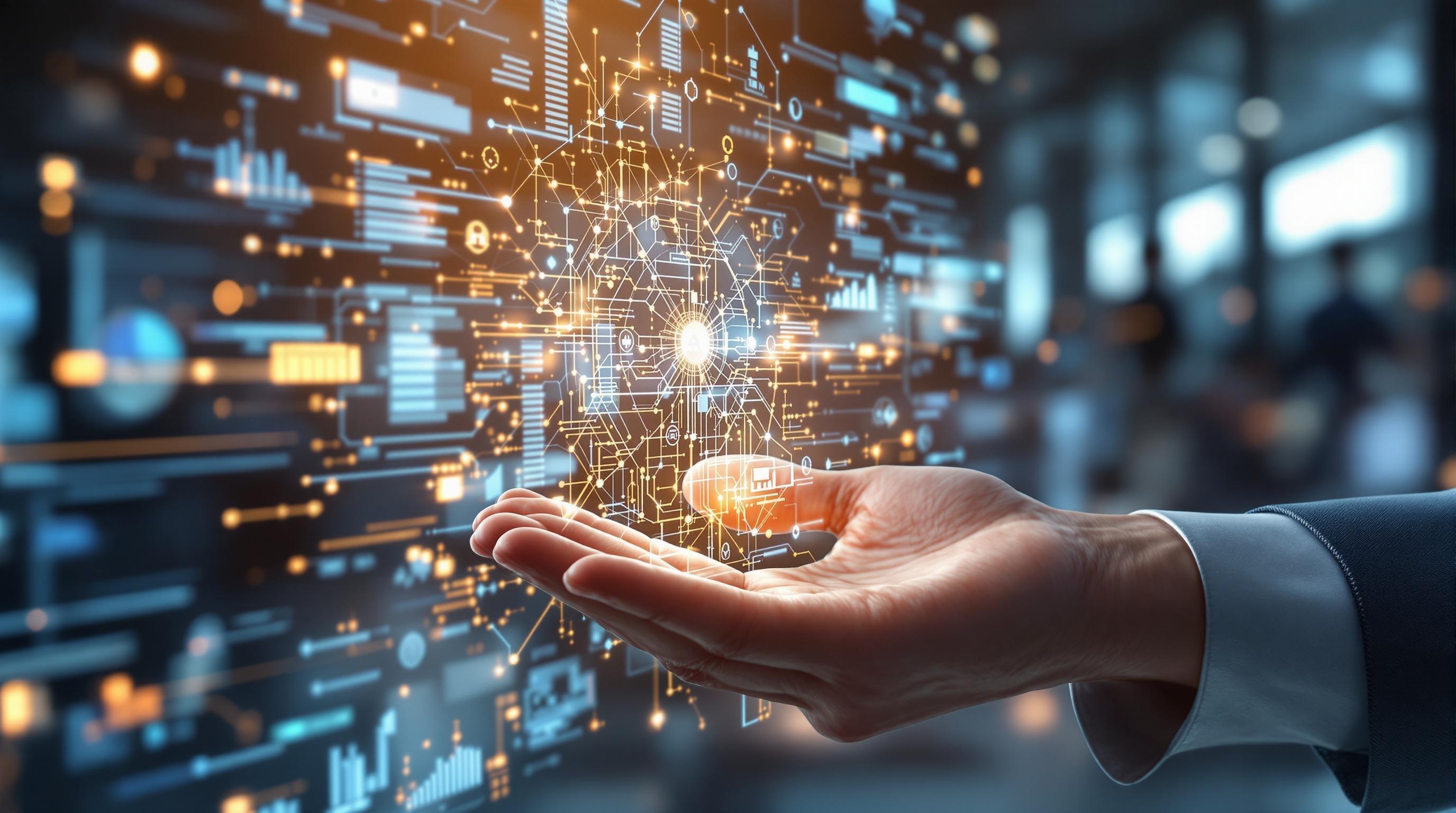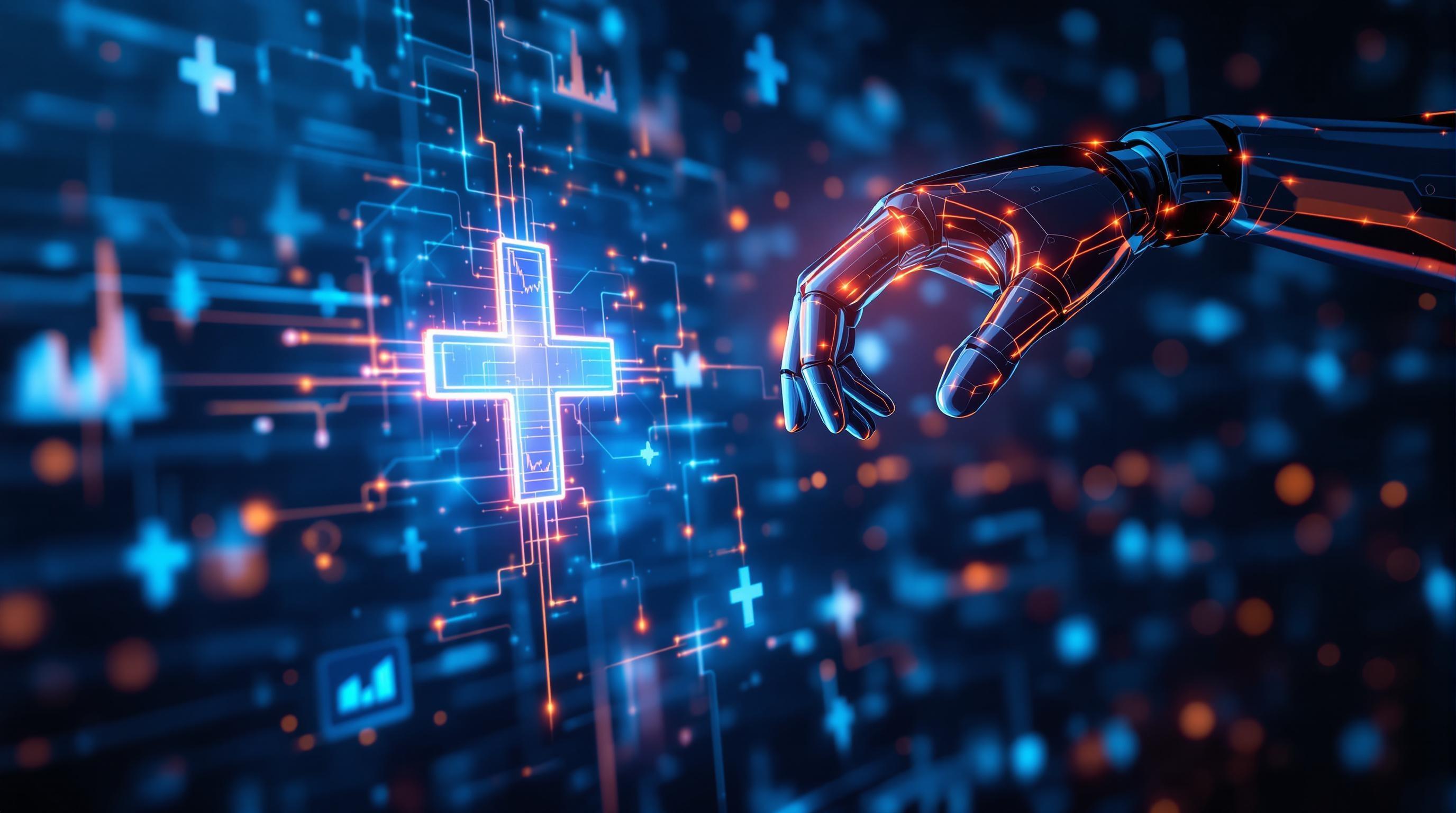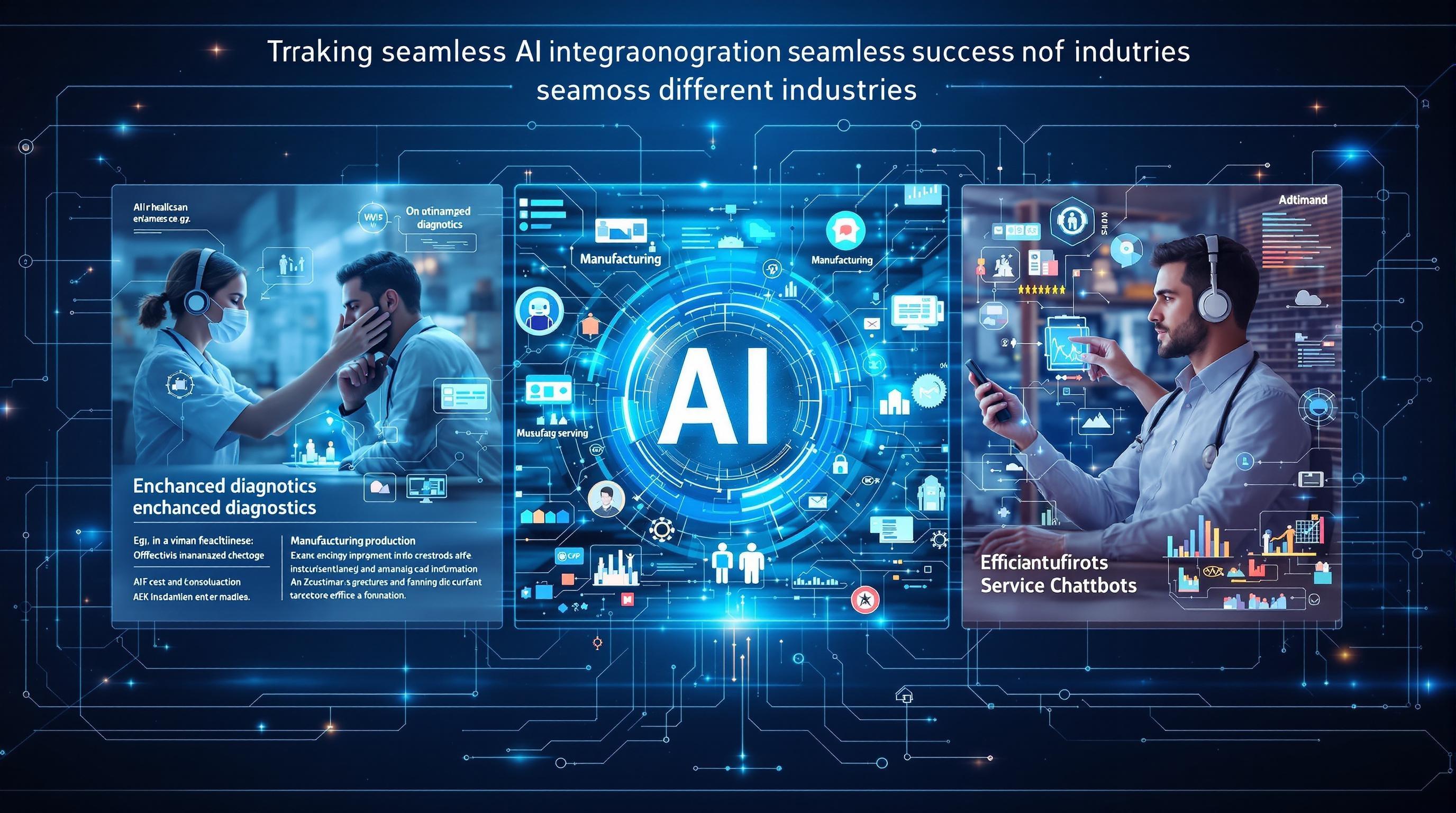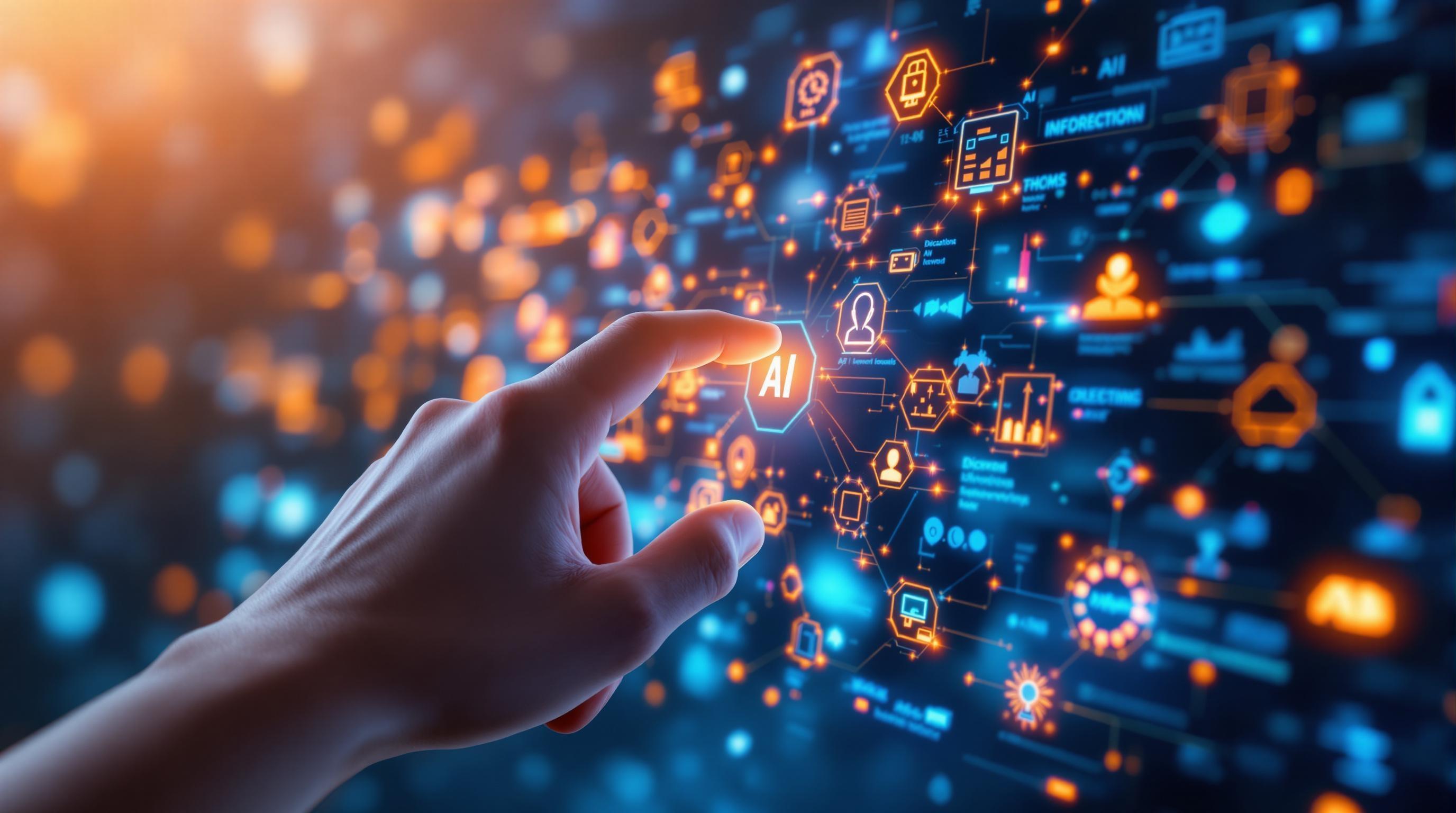AI and Productivity: A Comprehensive Guide to the Future of Work

AI and the Future of Productivity: A Comprehensive Overview
The rise of artificial intelligence (AI) is revolutionizing productivity across industries. From automating repetitive tasks to delivering advanced analytics, AI presents unprecedented opportunities to enhance efficiency and foster innovation. This guide explores AI's multifaceted impact on productivity, examining its benefits, challenges, ethical implications, and practical strategies for leveraging its transformative power.
AI's ability to automate routine tasks frees human workers to focus on more creative and strategic endeavors, significantly increasing output and elevating work quality. Across sectors, from manufacturing to customer service, AI optimizes processes, reduces errors, and accelerates workflows. Stay informed about these advancements by visiting our AI News section.
The benefits of AI are far-reaching. In healthcare, AI is transforming diagnostics and treatment, leading to more personalized and effective patient care, as highlighted in our article on AI in Healthcare. In finance, AI algorithms detect fraud, manage risk, and optimize investment strategies. In manufacturing, AI-powered robots enhance production speed and precision.

However, integrating AI presents challenges. Ethical considerations, including data privacy and algorithmic bias, must be addressed for responsible deployment. The potential for job displacement necessitates workforce development and upskilling initiatives. Balancing efficiency with ethical practices and social responsibility is paramount. Delve deeper into this topic in our section on AI and Ethics.
To effectively leverage AI for efficiency, organizations need clear strategies and investments in infrastructure. This involves identifying key areas where AI can have the greatest impact, implementing robust data management, and fostering a culture of experimentation. A data-driven approach, combined with continuous refinement of AI strategies, is essential for unlocking significant productivity gains.
AI also empowers leaders to make more informed decisions by providing insights derived from analyzing vast datasets, identifying patterns, predicting trends, and assessing risks. This capability is particularly valuable in dynamic and complex environments where timely and accurate information is crucial.
Furthermore, AI fosters innovation by enabling new forms of collaboration and creativity. AI tools assist in brainstorming, design, and prototyping, enabling teams to explore novel ideas and develop cutting-edge solutions. By automating routine tasks, AI empowers innovators to push boundaries. Explore tools like Adobe Firefly and Canva Magic Studio to see AI's impact on creativity.
Addressing the skills gap is crucial for realizing AI's full potential. As AI evolves, workers must acquire new skills to adapt to changing roles and collaborate effectively with AI systems. Investing in training programs and promoting lifelong learning are essential for ensuring a workforce ready to thrive in an AI-driven economy. Explore Personalized Learning with AI to discover reskilling and upskilling opportunities.
Ultimately, AI is a powerful tool for boosting productivity, but it demands careful planning, ethical considerations, and a commitment to workforce development. By embracing AI strategically and responsibly, organizations can unlock unprecedented levels of efficiency, innovation, and growth.
Will AI Take My Job? Navigating Job Security in the Age of Automation
The rapid advancement of AI-driven automation has sparked concerns about job security. While AI can displace certain roles, it also creates new opportunities and transforms existing positions. Understanding AI's impact on the job market is crucial for navigating the future of work.

The impact of AI-driven automation varies across different job roles. Repetitive, rule-based tasks are most susceptible, as AI excels at performing them efficiently and accurately. Jobs in manufacturing, data entry, and customer service are particularly at risk. However, these roles may evolve to focus on more complex and creative aspects.
Identifying vulnerable job roles is the first step in preparing for the future of work. Roles involving routine tasks, data processing, and basic customer interactions are prime candidates for automation. Examples include assembly line workers, telemarketers, and data entry clerks. The extent of automation depends on technological advancements, cost-effectiveness, and regulatory considerations.
Conversely, many job roles will evolve with AI rather than be replaced. These roles will require workers to collaborate with AI systems, interpret AI-generated insights, and manage AI-driven processes. Examples include data scientists, AI trainers, and AI ethicists. In these roles, human expertise and judgment are essential for ensuring AI is used effectively and responsibly.
Upskilling is crucial for workers in vulnerable job roles. This involves acquiring new skills that complement AI technologies, such as data analysis, critical thinking, and problem-solving. Developing these skills enables workers to transition into roles less susceptible to automation and more aligned with the needs of the AI-driven economy. AI Explorer can provide valuable upskilling ideas.
Reskilling is another important strategy for adapting to the changing job market. This involves learning entirely new skills to transition into a different career path, which may be necessary for workers whose jobs are significantly impacted by automation. Reskilling programs should focus on developing skills that are in high demand, such as software development, data science, and cybersecurity.
Adapting to the changing job market requires a proactive approach. Workers should continuously assess their skills, identify potential risks and opportunities, and invest in their own learning and development. This includes staying informed about emerging technologies, networking with industry professionals, and seeking opportunities to gain practical experience. Platforms such as Datacamp and Coursera offer courses and resources to stay ahead.
The question of whether AI will take your job is complex. While some jobs will be automated, others will evolve, and new roles will emerge. By proactively upskilling, reskilling, and staying informed, workers can navigate the changing landscape and thrive in the age of AI.
The Ethics of AI Productivity: Balancing Efficiency with Responsibility
As AI drives productivity gains, it's crucial to address the ethical implications that arise. Algorithmic bias, data privacy concerns, and the potential for job displacement demand careful consideration. Balancing efficiency with responsibility ensures that AI benefits society as a whole. This section explores the key ethical challenges and offers strategies for responsible AI deployment.
Algorithmic bias is a significant ethical concern. AI algorithms are trained on data, and if that data reflects existing biases, the algorithms will perpetuate and amplify those biases. This can lead to unfair or discriminatory outcomes in areas such as hiring, lending, and criminal justice. Addressing algorithmic bias requires careful data curation, diverse training datasets, and ongoing monitoring of AI systems. Tools like Hugging Face provide resources for bias detection and mitigation.
Data privacy is another critical ethical consideration. AI systems often require vast amounts of data to function effectively, raising concerns about the collection, storage, and use of personal information. Organizations must implement robust data protection measures, such as encryption, anonymization, and access controls, to safeguard privacy rights. Compliance with regulations like GDPR and CCPA is essential. Services like OneTrust can help organizations manage data privacy.
Job displacement due to automation raises ethical questions about the social impact of AI. While AI can create new opportunities, it also has the potential to displace workers in certain industries. Addressing this challenge requires proactive measures such as investing in workforce development programs, providing retraining opportunities, and exploring alternative economic models. Considering universal basic income or other social safety nets may also be necessary.
Transparency and accountability are key principles for responsible AI deployment. Organizations should be transparent about how their AI systems work, how they are used, and what impact they have. They should also establish clear lines of accountability for AI-related decisions and outcomes. Explainable AI (XAI) techniques can help make AI systems more transparent and understandable. Explore resources like Google AI Explainable AI for more information.
Ethical frameworks and guidelines provide a roadmap for responsible AI development and deployment. Organizations should adopt ethical principles that align with their values and stakeholders' expectations. These principles should guide the design, development, and use of AI systems. Frameworks such as the Stanford Institute for Human-Centered AI's Ethical AI Framework can provide valuable guidance.
Stakeholder engagement is crucial for ensuring that AI is developed and used in a way that reflects societal values. Organizations should engage with stakeholders, including employees, customers, and community members, to solicit feedback and address concerns. This can help build trust and ensure that AI benefits everyone. Consider platforms like Pollenize for stakeholder engagement.
Ultimately, balancing efficiency with responsibility requires a commitment to ethical practices, transparency, and stakeholder engagement. By addressing the ethical challenges proactively, organizations can harness the power of AI to drive productivity gains while upholding societal values.
AI Productivity Toolkit: Top AI Tools to Boost Your Team's Output
AI offers a plethora of tools designed to boost productivity across various tasks and industries. From writing assistants to project management platforms, these tools can help teams work smarter, faster, and more efficiently. This section highlights some of the top AI tools available, categorized by function, along with their key features and benefits.
Writing and Content Creation:
Grammarly: An AI-powered writing assistant that checks grammar, spelling, punctuation, and style. It helps improve clarity, conciseness, and overall writing quality.
QuillBot: A paraphrasing tool that rewrites text to improve clarity, fluency, and readability. It offers various modes, including standard, fluency, creative, and formal.
Jasper: An AI writing assistant that generates high-quality content for blog posts, articles, social media, and more. It uses natural language processing to understand the topic and create engaging content.
Design and Creativity:
Canva Magic Studio: Offers AI-powered design tools to simplify graphic design and content creation.
Adobe Firefly: Generates images and text effects from simple prompts, enabling rapid content creation.
Midjourney: Transforms text prompts into unique images, streamlining visual design workflows.
Project Management and Collaboration:
Notion AI: Integrates AI into project management for automated task summarization and content generation.
Airtable: Combines spreadsheet functionality with database features, enhanced by AI for data analysis and project tracking.
Asana: Though not strictly AI-powered, Asana integrates with various AI tools to enhance project tracking, task management, and team collaboration.
Data Analysis and Insights:
Google Cloud AI: Provides machine learning models and tools for predictive analytics and data-driven insights.
Tableau: Integrates with AI platforms to visualize and analyze complex data for decision-making.
Outlier AI: Detects anomalies and trends in data, providing automatic insights for businesses.
Customer Service and Communication:
HubSpot: Uses AI to personalize customer experiences and automate marketing tasks.
Intercom: Provides AI-driven chatbots and customer support tools for enhanced customer engagement.
Tawk.to: Offers live chat support with AI assistance, streamlining customer interactions.
Coding and Development:
GitHub Copilot: Acts as an AI pair programmer, suggesting code snippets and completing lines of code. It helps developers write code faster and more efficiently.
Codeium: An AI-powered coding assistant that provides code completion, code search, and code generation features.
Replit: An online IDE that integrates with AI tools to provide real-time code analysis and suggestions.
When selecting AI tools, consider your team's specific needs, budget, and technical expertise. Experiment with different tools to find the best fit for your organization. Regularly evaluate the effectiveness of AI tools and make adjustments as needed. For example, the rise of services like DeepSeek offer alternative coding solutions.

Personalized Learning with AI: Bridging the Skills Gap for Future Productivity
The skills gap is a growing challenge in today's rapidly evolving job market. As AI transforms industries, workers must acquire new skills to remain competitive. Personalized learning with AI offers a promising solution, tailoring education to individual needs and preferences. This section explores how AI-driven learning platforms can help bridge the skills gap and prepare workers for the future of productivity.
AI-powered learning platforms analyze individual learning styles, preferences, and knowledge gaps. They use this information to create personalized learning paths that are tailored to each learner's unique needs. This approach can make learning more engaging, efficient, and effective. Platforms like Coursera and edX leverage AI to recommend courses and learning resources.
Adaptive learning technologies adjust the difficulty and pace of instruction based on the learner's performance. They provide personalized feedback and support, helping learners master new concepts and skills. This approach can accelerate learning and improve retention. Tools like Khan Academy offer adaptive learning experiences in various subjects.
AI tutors provide personalized guidance and support to learners, answering questions, providing feedback, and offering encouragement. They can help learners overcome challenges and achieve their learning goals. AI tutors are available 24/7, providing on-demand support whenever learners need it. Solutions like Duolingo use AI to personalize language learning.
Skills assessment tools use AI to identify individual strengths and weaknesses. They provide insights into the skills that learners need to develop to succeed in their careers. These tools can help learners make informed decisions about their education and career paths. Services like LinkedIn Skills Assessments provide skill verification.
Content recommendation systems use AI to suggest relevant learning resources based on individual interests and goals. They can help learners discover new topics and expand their knowledge base. This approach can make learning more engaging and rewarding. Platforms like YouTube use AI to recommend videos based on viewing history.
Data analytics can provide insights into the effectiveness of personalized learning programs. By analyzing learner data, educators and employers can identify what's working and what's not. This information can be used to improve learning outcomes and optimize training programs. Solutions like Tableau help visualize and analyze learning data.
Investing in personalized learning with AI is essential for bridging the skills gap and preparing workers for the future of productivity. By tailoring education to individual needs, organizations can unlock the full potential of their workforce. Consider tools like Brilliant for interactive learning.

AI Productivity Success Stories: Real-World Examples of AI-Driven Efficiency
AI is transforming productivity across industries, leading to remarkable efficiency gains and innovative solutions. Real-world examples demonstrate the power of AI to optimize processes, enhance decision-making, and drive growth. This section highlights several AI productivity success stories, showcasing the diverse applications and tangible benefits of AI.
Healthcare:
Improved Diagnosis: AI algorithms are helping doctors diagnose diseases more accurately and efficiently. For example, AI-powered image recognition systems can detect cancer in medical images with greater precision than human radiologists. This can lead to earlier diagnosis and better treatment outcomes. AI in Healthcare showcases these advancements.
Personalized Treatment: AI is enabling personalized treatment plans that are tailored to individual patient needs. By analyzing patient data, AI algorithms can predict how patients will respond to different treatments and recommend the most effective course of action. This can improve treatment outcomes and reduce healthcare costs.
Manufacturing:
Predictive Maintenance: AI is being used to predict equipment failures and optimize maintenance schedules. By analyzing sensor data from machines, AI algorithms can identify patterns that indicate impending failures. This allows manufacturers to perform maintenance proactively, preventing costly downtime and extending the lifespan of equipment. Tools like Azure Machine Learning enable predictive maintenance.
Optimized Production: AI is optimizing production processes by identifying bottlenecks and inefficiencies. By analyzing data from production lines, AI algorithms can recommend changes that will improve throughput and reduce waste. This can lead to significant cost savings and increased productivity.
Finance:
Fraud Detection: AI is being used to detect fraudulent transactions and prevent financial crimes. By analyzing transaction data, AI algorithms can identify patterns that are indicative of fraud. This allows financial institutions to take action quickly, preventing losses and protecting customers. Solutions like Thomson Reuters offer AI-driven fraud detection.
Risk Management: AI is enhancing risk management by providing insights into potential threats and vulnerabilities. By analyzing market data, economic indicators, and other relevant information, AI algorithms can assess risks and recommend strategies for mitigating them. This can help financial institutions make more informed decisions and protect their assets.
Customer Service:
Chatbots: AI-powered chatbots are providing instant customer support and resolving inquiries efficiently. By understanding natural language, chatbots can answer questions, provide information, and guide customers through processes. This can reduce wait times and improve customer satisfaction. Tools like Intercom offer chatbot solutions.
Personalized Recommendations: AI is enabling personalized product recommendations that are tailored to individual customer preferences. By analyzing customer data, AI algorithms can suggest products that are likely to be of interest. This can increase sales and improve customer loyalty.
These success stories demonstrate the transformative power of AI to drive productivity gains across various industries. By embracing AI strategically and responsibly, organizations can unlock new levels of efficiency, innovation, and growth.
Keywords: AI productivity, artificial intelligence, future of work, automation, AI ethics, skills gap, workforce development, AI tools, personalized learning, AI training, job security, upskilling, reskilling, algorithmic bias, data privacy
Hashtags: #AIProductivity #FutureOfWork #AIEthics #AISkills #Automation

For more AI insights and tool reviews, visit our website https://www.best-ai-tools.org, and follow us on our social media channels!
Website: https://www.best-ai-tools.org
X (Twitter): https://x.com/bitautor36935
Instagram: https://www.instagram.com/bestaitoolsorg
Telegram: https://t.me/BestAIToolsCommunity
Medium: https://medium.com/@bitautor.de
Spotify: https://creators.spotify.com/pod/profile/bestaitools
Facebook Page: https://www.facebook.com/profile.php?id=61577063078524
YouTube: https://www.youtube.com/@BitAutor
Recommended AI tools
Transformers
Conversational AI
State-of-the-art AI models for text, vision, audio, and beyond—open-source tools for everyone.
PyTorch
Scientific Research
Flexible, Fast, and Open Deep Learning
Bolt.new
Code Assistance
Build full-stack apps at the speed of thought—AI-powered, browser-native, instantly deployed.
Genspark
Productivity & Collaboration
AI-powered research and automation, reimagined.
ReadTheory
Productivity & Collaboration
Adaptive reading practice for measurable growth
Angular.dev
Code Assistance
The framework for building scalable web apps with confidence


